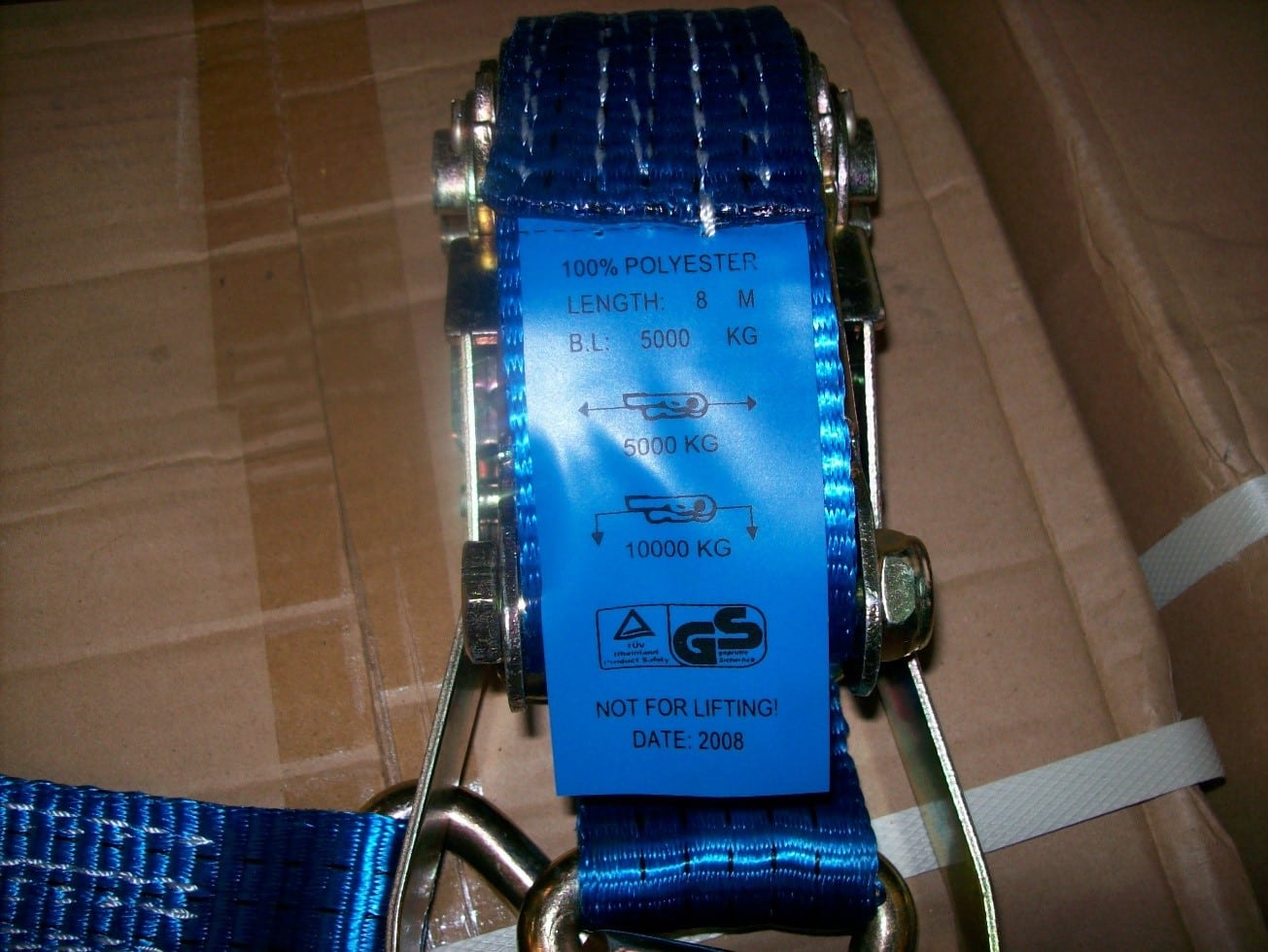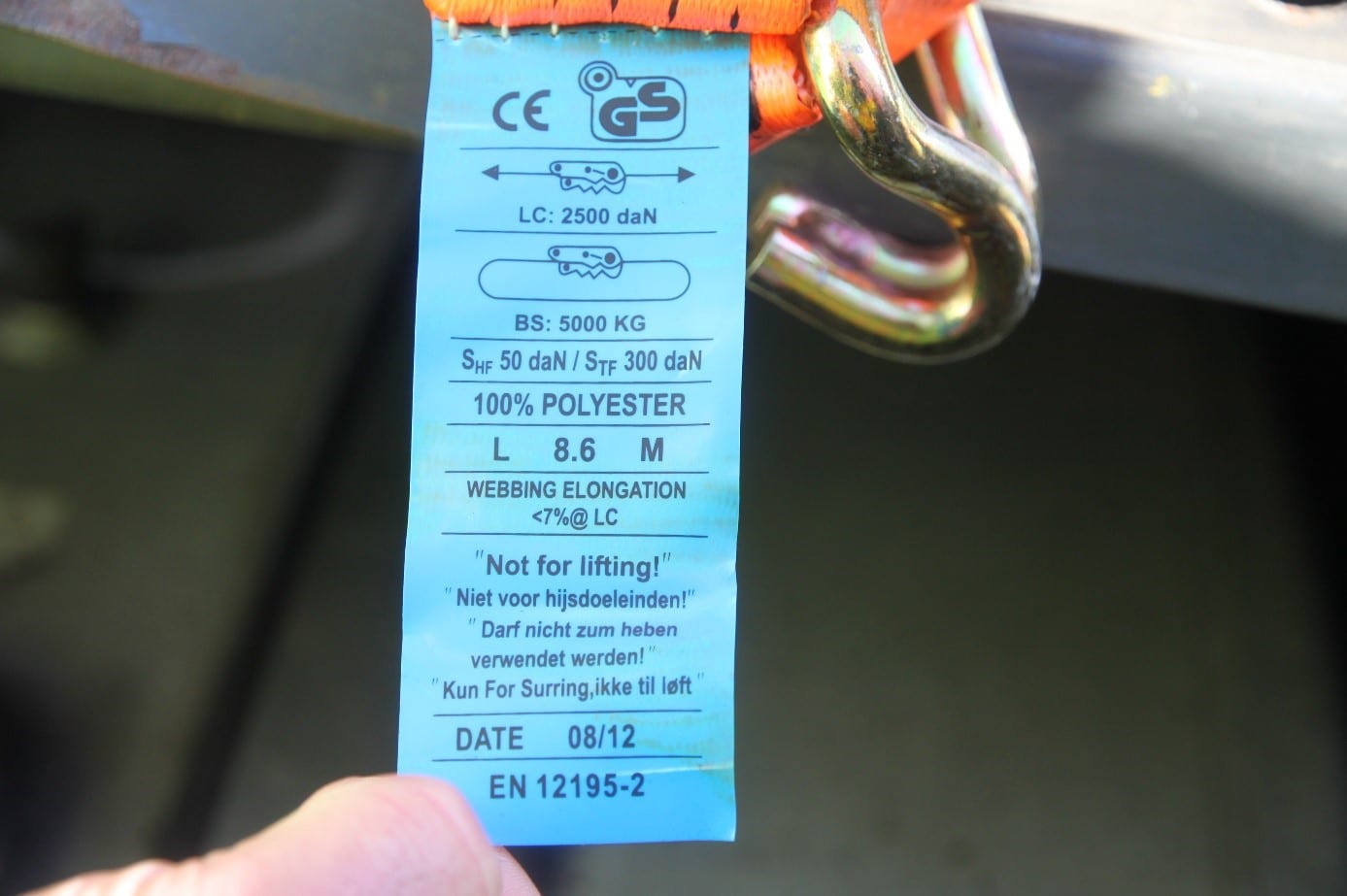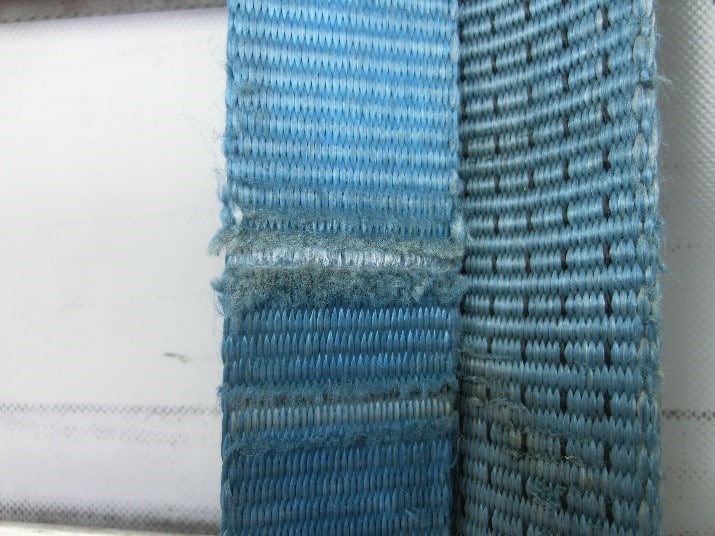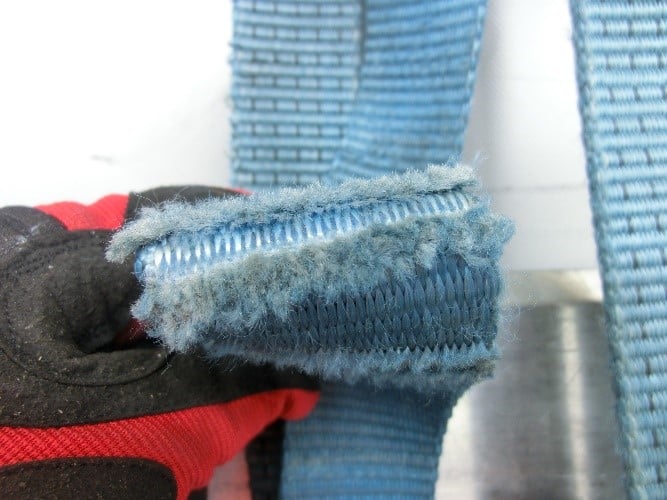
Now 10% off all Ergolash lashing straps save now! Voucher code: ergo10 | Valid until 31.05.2025
Lashing straps are the most frequently used securing device in load securing. Nevertheless, there are always discussions among those involved in the industry about technical details, which are often underpinned by well-founded half-knowledge. If you ask Mr. Google, you also don’t always get expertly accurate statements.
In today’s article, I would like to describe and explain a few details and terms. The basis for this are the corresponding EN standards. These are
I would like to start by explaining a few terms.
The breaking force (BF), sometimes also referred to as breaking load, is a term that is often used in connection with strapping. It indicates the tensile force at which the strap breaks and is usually specified in deca-Newtons (daN) or Newtons (N).
The lashing capacity (LC) indicates the securing force that can be expected when using belts, chains or ropes. It is also usually specified in deca Newtons (daN). The securing equipment must have a label indicating the lashing capacity. The breaking strength of the strap material, without connecting elements, must be at least 3x the lashing capacity (LC).
The terms kilogram and deca-Newton are often used interchangeably in the industry, but this is clearly incorrect. Only the number is the same. Drivers and shippers use the term “2-tonne belt”, for example, because the number 2,000 appears on the label. On closer inspection, however, you will notice that the unit is “daN” and not “kg“. Kilogram (kg) is the ISO unit for mass (m) and Newton (N) for force. It is just as wrong to assume that a belt with the number 2,000 on it can also secure a load weighing 2,000 kg.
How do you get from the unit “kg” to the unit “daN”? This requires a small calculation, where 1 kg represents the weight of the load. It reads:
1kg x 9.81m/s2 = 9.81kgm/s2 = 9.81N rounded up to 10N = 1daN
The result is the mass force. All you have to do is multiply the weight of the load by the acceleration due to gravity and divide by 10. This calculation is not necessary if the unit “kg” is replaced by “daN” because the number in front of it remains the same.
An equally frequent topic is the question of what must be on a belt label, what can be on it or what is simply wrong/not permitted. EN-12195-2 makes clear statements on this. Every label must include a reference to the standard. Experience shows that it will be on the label even if the information is incorrect. You can only protect yourself by buying from reputable manufacturers/suppliers. Dubious sources and unusual market prices are always suspicious.
Contrary to the opinion of those involved, including sometimes the inspection authorities, a belt does not have an expiry date. There are only discard characteristics that must lead to it being discarded. Statements such as “only for private use” or “it’s still good for the forest” are also dangerous if goods are secured with them during transportation on public roads.
The following information must be on a belt label.
Mandatory information according to EN-12195-2
Forces must be specified in daN. The blue label stands for the material PES=polyester

Impermissible or unnecessary information
Inadmissible:
Not required:

Impermissible or unnecessary information
Inadmissible:
Not required:

Coding threads can, but do not have to be. One thread stands for 500daN. This regulation is not standardized and not required, but it is common. A belt with 4 threads would have an LC of 2,000 daN.

According to the standard, the year of manufacture must appear on the label. Many manufacturers state month/year.
Many manufacturers specify month/year. A belt has no expiry date! The information at the end of the label for the next annual inspection makes sense, use beyond 2011 is possible.
The discard maturity of a belt is defined exclusively by discard characteristics .

Storage features:
Damage that accounts for more than 10% of the belt width/thickness.



Damage related to the belt thickness is often overlooked. The buckling test clearly showed that the belt is ready to be discarded.


Damage is also often overlooked in the area where the hooks are sewn in. This is because the insertion bar rests on the belt when it is hooked into the perforated strip.

Most handling errors occur because many of those involved assign the information on the label to the wrong securing method.
On this label, the problem is solved with a graphic.

VDI-2700 Sheet 3.1 requires every company that uses belts to check them once a year and to document this check. The user (driver/loader) must check the belt for suitability/maturity before each use. It is not uncommon to see a lot of belts hanging from a truck’s insertion slats that look the same age. As a practitioner, I always claim that these belts are not checked. An inspection will usually reveal that belts need to be replaced due to use. If this is the case, the belts on the truck would differ visually between having been in use for a long time and having been recently replaced. This fact alone can lead to a detailed inspection. This should be avoided by all parties involved, as even more defects are often uncovered.
Yours, Sigurd Ehringer

Sigurd Ehringer
✔ VDI-zertifizierter Ausbilder für Ladungssicherung ✔ Fachbuch-Autor ✔ 8 Jahre Projektmanager ✔ 12 Jahre bei der Bundeswehr (Kompaniechef) ✔ 20 Jahre Vertriebserfahrung ✔ seit 1996 Berater/Ausbilder in der Logistik ✔ 44 Jahre Ausbilder/Trainer in verschiedenen Bereichen —> In einer Reihe von Fachbeiträgen aus der Praxis, zu Themen rund um den Container und LKW, erhalten Sie Profiwissen aus erster Hand. Wie sichert man Ladung korrekt und was sind die Grundlagen der Ladungssicherung? Erarbeitet und vorgestellt werden sie von Sigurd Ehringer, Inhaber von SE-LogCon.
Rothschenk assortment
Our customer center has only one goal: to turn your problems into solutions. Whether standard stowage cushions, bestsellers or load securing personally tailored to your needs -. we accompany you consistently from A as in field service to Z as in certification. That is our promise to you, as a leader in our industry.
We attach great importance to professional cargo securing. That is why we have our own production, which ensures reliable operation through modern manufacturing technologies and strict quality control. Thus, we offer our customers a comprehensive and high-quality range of services in the field of transport logistics.
DIN ISO 9001:2015, EMAS and Ecovadis are not foreign words to you? Then it's time to work with the best.
You don't take any risks with us - we have been awarded the Platinum Medal on the EcoVadis sustainability rating platform.
As a load securement company, we are proud to have several certifications that validate our sustainability efforts and our commitment to environmental protection and social responsibility. For you as a purchaser, this means that we demand and promote the implementation of high environmental and social standards both within the company and along the supply chain.
You are currently viewing a placeholder content from Google Maps. To access the actual content, click the button below. Please note that doing so will share data with third-party providers.
More Information